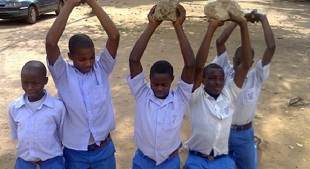
Progress has been made but donor funds are drying up – what must change
ANALYSIS | YOGAN PILLAY & MAGDA ROBALO | Remarkable progress has been made against the HIV epidemic in the last two decades. However, a loss of momentum in fighting HIV across the globe threatens to undermine the strides that have been made.
There is a crisis in sustainability as the urgency surrounding funding for the HIV response dwindles. This despite the disease claiming a life every minute in 2022.
An estimated 39.9 million people globally were living with HIV in 2023. Of these, 9.2 million did not have access to lifesaving antiretroviral treatment and 630,000 died from AIDS-related illnesses. These are not merely statistics. Each life lost to HIV is a life too many.
Sub-Saharan Africa, home to 65% of the people living with HIV globally, has been the hardest hit by the HIV epidemic. Global social solidarity has enabled a response.
Between 2001 and 2023, African countries expanded access to lifesaving antiretroviral therapy, reduced AIDS-related deaths and witnessed significant declines in annual new HIV infections, particularly in eastern and southern Africa (59% reduction) and west and central Africa (46% reduction).
We have been public health policymakers and practitioners for decades. We write here under the auspices of the Africa HIV Control Working Group, an institution that seeks sustainable ways of eliminating HIV as a public health concern in Africa.
We look at what has been achieved so far and ways to make sure the fight against HIV does not lose momentum.
What progress has Africa made?
Political commitment, prioritised funding and innovative technologies such as pre-exposure prophylaxis (PrEP) have proven to be effective tools in efforts to advance the HIV response.
To date, 95% of people with HIV in seven eastern and southern African countries are receiving antiretroviral treatment (Botswana, Eswatini, Lesotho, Rwanda, Tanzania, Zambia and Zimbabwe). Of these Botswana, Eswatini, Rwanda, Tanzania and Zimbabwe have met the targets for HIV testing (95% tested), treatment (95% of those tested on treatment) and viral suppression (95% of those on treatment who don’t show the virus).
Eight more are on track, but many others will require sustained support to reach these goals. All need to have the resources to sustain these gains.
Despite these achievements, we are seeing increases in HIV infection rates in countries in north Africa which are also facing substantial funding shortages. Unwavering commitment, innovative solutions
Solutions to the HIV crisis exist
Through shared expertise and technologies Africa can scale up the use of HIV prevention tools like PrEP (pre-exposure prophylaxis drugs) and the dapivirine vaginal ring.
But using the existing tools will not be enough to end HIV. Dedicated investment in new, game-changing tools like vaccines and long-acting prevention and treatment will be critical.
Strategic investments in African-led research and development are also important, as is local and regional manufacturing of pharmaceuticals. The COVID-19 pandemic showed the importance of local production.

About 95% of medicines used in Africa are imported. The continent produces only 3% of medicines used globally.
While Africa’s contribution to global publications on HIV increased from 5.1% in 1986 to 31.3% in 2020, this is still low relative to the burden of HIV in Africa.
Done together, shared expertise and dedicated investment could offer a more effective approach to combating HIV in Africa.
However, this requires financial and political commitments from governments, donors, civil society and the private sector.
Donor priorities
In 2022, funding for low- and middle-income countries to fight HIV amounted to US$20.8 billion. This is a far cry from the US$29.3 billion needed by 2025 for a sustainable response to HIV.
Africa’s fight against HIV, long reliant on external funding that often tends to focus on donor priorities rather than country contexts, must be reimagined as the global landscape shifts.
We suggest the solutions lie in innovative public-private-philanthropic funding models that incorporate strategic taxes, diaspora bonds, co-financing, grants, loans and restructured debt.
In addition, African countries should move more rapidly to local and regional production of commodities. They should pool resources to procure commodities and share risks.
The Global Fund’s shift towards supporting country-led initiatives also exemplifies how African countries can achieve sovereignty in their HIV responses.
Aligning funding with national priorities can help to make health outcomes reflect the needs and aspirations of Africa’s communities.
Debt-for-health swaps could be another viable strategy. Creditors would forgive a portion of a country’s debt in exchange for commitments to invest the equivalent amount in health initiatives.
The need for self-reliance
South Africa’s remarkable journey in increasing domestic funding for HIV programmes shows what’s possible. With contributions from the fiscus towards fighting HIV ranging from 69% to 77% between 2017 and 2020, the country has demonstrated that self-reliance in health financing is possible.
Rwanda’s innovative strategies, including free access to antiretroviral therapy and extensive testing campaigns, offer a roadmap for nations seeking to enhance their HIV interventions.
Zimbabwe’s HIV/AIDS levy, a 3% tax on corporate profits and personal incomes, is another example.
These countries are proof that a sustainable response to the HIV epidemic is a political and financial choice. What Africa needs now are the commitments and actions that will get us firmly started on this path.
*****
Yogan Pillay is Extraordinary Professor in the Division of Health Systems and Public Health, Stellenbosch University & Magda Robalo is Infectious disease and public health expert, University of Oslo
Source: The Conversation
 The Independent Uganda: You get the Truth we Pay the Price
The Independent Uganda: You get the Truth we Pay the Price



